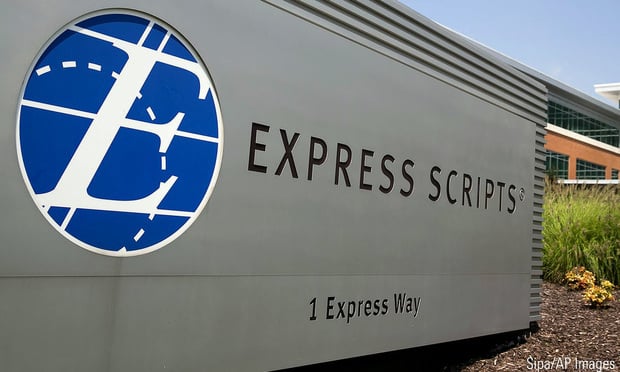(Bloomberg) — Former American International Group Inc. Chairman Maurice "Hank" Greenberg claims the U.S. bailout of the insurer cheated shareholders out of at least $25 billion.
On Wednesday, the judge presiding over his lawsuit heard final arguments in the long-running case. If previous rulings and questions posed to both sides are any measure, he could be leaning toward Greenberg.
U.S. Court of Federal Claims Judge Thomas Wheeler sided with the 89-year-old executive several times during the trial. Now, he asked lawyers for both sides to address five questions, including how to measure possible harm to shareholders.
Recommended For You
That suggests Wheeler may be "leaning toward a finding of liability," said Elliott Stein, a legal analyst for Bloomberg Intelligence. While phrased evenhandedly, the judge's questions are "consistent with rulings before and during the trial that seem to favor shareholders."
The eight-week trial featured defenses of the AIG rescue by the bailout's masterminds, former Treasury Secretary Henry Paulson, ex-Federal Reserve Chairman Ben Bernanke and Timothy Geithner, the former Treasury secretary who was president of the Federal Reserve Bank of New York in 2008. All three said actions they took eased AIG's calamitous condition and avoided broader damage to the economy that would have resulted if the insurer had defaulted on counterparty claims by banks.
Starr's claims
Greenberg's Starr International Co. contends the government exceeded its authority by demanding an 80 percent stake in New York-based AIG in exchange for an initial $85 billion loan at a 14 percent interest rate.
Greenberg's lawyer, David Boies, asked Wheeler to find the government acted illegally in two ways: by demanding the equity in exchange for the bailout loan, and by failing to pay just compensation to stockholders for the shares taken when they increased in value after the rescue was announced. Starr needs to prevail on only one of those claims to win its case.
Boies told Wheeler that AIG was "demonized" by the government. The U.S. authorized emergency loans to hundreds of companies over the past 75 years and "never once, except in the case of AIG, did they demand equity," he said. That's because it lacked authority from Congress, Boies argued.
Ballooned
Though the AIG bailout ballooned to $182 billion, the insurer eventually returned to profitability and repaid the assistance in 2012, leaving the government with a $22.7 billion profit. Starr, the Switzerland-based holding company run by Greenberg, seeks compensation for AIG investors who signed onto the suit for the dilution of their shares as a result of the government's equity stake.
The judge's other questions concern shareholder rights, the AIG board's voluntary consent to the loan terms and whether a possible bankruptcy is relevant to the analysis of liability or damages.
A verdict isn't expected for at least several weeks and appeals could take years. Stein said Wheeler could find the government acted illegally yet not award damages.
A ruling against the government is likely to increase congressional pressure on the Federal Reserve Board of Governors to enact policies that prohibit rescues of individual companies.
It might also trigger a fight between the government and AIG, which isn't a party to the suit, over who is responsible for damages.
Stock 'taking'
John Echeverria, a Vermont Law School professor, said Wheeler appears to be wrestling with the nature of the government's acquisition of AIG stock.
The judge asked lawyers to address whether Starr's claim of an illegal taking — a constitutional claim — should be viewed as a "regulatory taking" or a "physical taking."
A physical taking, akin to the government seizure of property when it asserts eminent domain, would bolster Starr's case, Echeverria said. Such a determination wouldn't require the judge to scrutinize the government's reason for its action and its economic effects, he said.
"If it's a regulatory taking, a much more deferential standard toward the government applies," said Echeverria, who writes the Takings Litigation blog. "How he resolves that question probably will resolve the case, at least at his level."
Voluntary loan
Wednesday, Boies argued that even if the demand for equity wasn't illegal, the assumption of 80 percent of AIG's shares was a physical taking requiring "just compensation" equivalent to fair market value of the property at the time of the taking. That works out to either about $27 billion or $39 billion depending on which date is picked for the taking, he said.
The government argues there was no taking of either kind because there was no economic harm.
"Absent the rescue, AIG would have collapsed into bankruptcy, rendering Starr's shares worthless," government lawyers wrote in court papers filed in Washington.
The bailout terms were patterned on a private rescue headed by Goldman Sachs Group Inc. and JPMorgan Chase & Co. that was abandoned shortly before the New York Fed stepped in, according to trial testimony.
Criticism of the bailout included that the Fed was unfairly picking winners and losers, letting Lehman Brothers Holding Inc. file bankruptcy on Sept. 15, 2008, the day before the New York Fed began the AIG bailout.
A win for the government would boost the central bank's independence and give its leaders leeway to interpret the Fed's emergency lending powers more broadly, said Sarah Binder, a senior fellow at the Brookings Institution who studies the Fed's relationship with Congress.
Judge's criticism
Greenberg headed AIG for almost four decades before leaving in 2005. Starr, AIG's largest shareholder in 2008, filed its suit in November 2011.
In the 41 months since, Wheeler, an appointee of Republican President George W. Bush, rebuffed government bids to dismiss the suit before trial and criticized the U.S. for pressuring the AIG board to not join the case.
Wheeler ordered the government to turn over more than 30,000 e-mails and other documents after ruling in November that it had waived its right to confidentiality with outside lawyers.
Those documents show legal advisers to the New York Fed looked for ways to avoid accountability to shareholders for the bailout. They also expressed doubt about their authority to demand AIG stock as a condition of the loan.
"The government is on thin ice and they know it," an outside lawyer for the New York Fed wrote to colleagues. "But who is going to challenge them on this ground?"
Those documents don't change the underlying argument that the Fed had the legal authority to step in to save AIG, government lawyers argue.
275,000 shareholders
Boies told Wheeler Wednesday that AIG was given much harsher terms than investment banks like Morgan Stanley because regulators needed "somebody to be a political scapegoat."
Saving AIG from a possible bankruptcy didn't justify the demand for equity, he said.
"That's irrelevant," Boies said.
If Greenberg wins his case and is awarded damages, they would go to Starr and about 275,000 other shareholders in the case, not to AIG, which declined to join the suit.
Damages initially would be paid out of the Judgment Fund, a pot of money administered by the Treasury Department used to pay people who win financial awards from the government.
The U.S. could turn around and seek help paying from AIG, which, according to the government, agreed as a condition of the bailout loan to pay damages resulting from litigation over the rescue.
AIG's 2014 annual report acknowledges "a material adverse effect on our business" if reimbursement is required. The company said in the filing for the first time that it would fight an attempt by the U.S. to collect.
The case is Starr International Co. v. U.S., 11-cv-00779, U.S. Court of Federal Claims (Washington).
© 2025 ALM Global, LLC, All Rights Reserved. Request academic re-use from www.copyright.com. All other uses, submit a request to [email protected]. For more information visit Asset & Logo Licensing.







